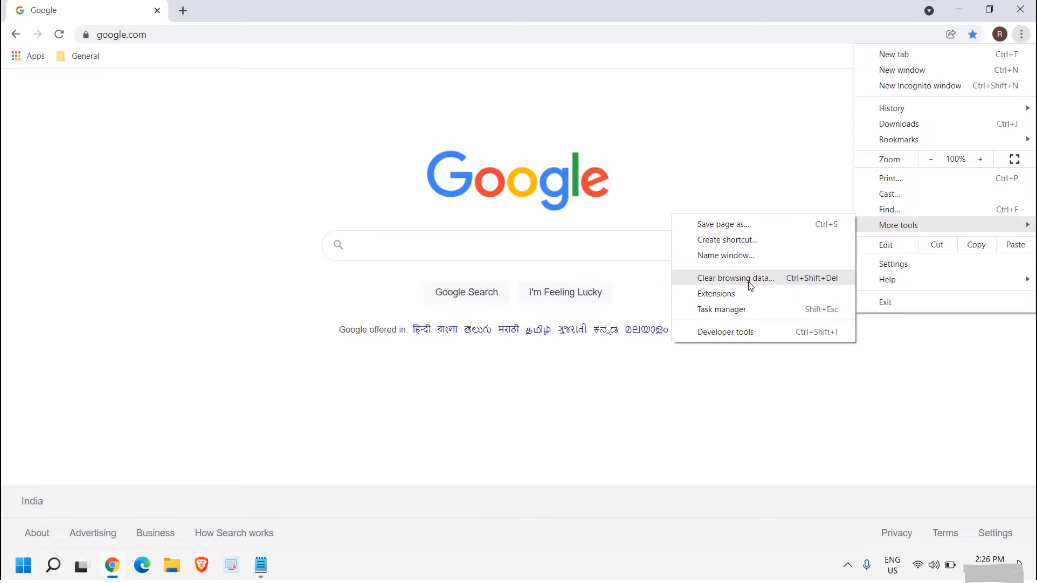To boost your website’s traffic, you need to prioritize its speed. A speedy website enhances user experience and positively impacts SEO rankings. Slow-loading pages can lead to visitor frustration and high bounce rates, while a fast website keeps users engaged. Implement strategies like image optimization, minimizing HTTP requests, enabling browser caching, and utilizing content delivery networks (CDNs). Choose a reliable hosting provider and continuously monitor your website’s speed using tools like Google PageSpeed Insights.
Understanding the Significance of Website Speed

1. User Experience
A slow website frustrates visitors, leading to a poor user experience. Users are more likely to abandon a site that takes too long to load, which can result in lost potential customers and revenue.
2. SEO Rankings
Search engines like Google prioritize fast-loading websites in their search results. A slow website can negatively affect your SEO rankings, making it harder for potential customers to find your site.
3. Conversion Rates
Website speed directly influences conversion rates. Faster websites tend to have higher conversion rates, as visitors are more likely to complete actions such as purchasing or signing up for a newsletter.
Common Causes of a Slow Website:
Large and Unoptimized Images
Large and unoptimized images are one of the most significant contributors to slow website loading times. Images with high file sizes take longer to download, especially on slower internet connections. This can result in delayed page rendering and a poor user experience.
Failure to compress images properly before uploading them to your website can lead to slower loading times. Image compression reduces the file size without compromising quality, making it quicker for browsers to load images.
Excessive HTTP Requests
Each element on a web page, such as images, scripts, stylesheets, and fonts, requires a separate HTTP request to the server. Too many elements or external resources can overload the server and slow page loading.
Unminified JavaScript and CSS files contain unnecessary whitespace and comments. Minifying these files by removing unnecessary characters can reduce the number of HTTP requests and speed up page loading.
Lack of Browser Caching
Browser caching allows certain website elements to be stored locally on a user’s device after the initial visit. When browser caching is not implemented, users must download the same resources repeatedly, causing unnecessary delays.
Slow Web Hosting
Shared hosting plans, while budget-friendly, can lead to slow website performance, especially during peak traffic times. Sharing server resources with other websites can result in reduced speed and reliability.
Websites with heavy traffic or resource-intensive applications may struggle with insufficient server resources. Upgrading to a dedicated or Virtual Private Server (VPS) can provide more computing power and improve speed.
Unoptimized Code and Scripts
Excessively bulky or redundant code can slow down your website’s performance. Regularly review and optimize your website’s code to eliminate inefficiencies and improve loading times.
Scripts that block the rendering of a web page until they are fully loaded can lead to a slower user experience. Consider loading non-essential scripts asynchronously to allow the page to render faster.
Excessive Plugins and Widgets
Using too many third-party plugins and widgets can slow down your website. Each plugin adds additional code and functionality, which can lead to increased loading times.
Steps to Speed Up Your Website:

1. Choose the Right Hosting Provider
Server Speed: Opt for a hosting provider with fast servers. Solid-state drives (SSDs) offer faster data retrieval, contributing to quicker loading times.
Uptime: Ensure the hosting provider guarantees excellent uptime. Frequent downtime can disrupt user experiences and affect your website’s credibility.
Server Location: Choose a location closer to your target audience. This minimizes the physical distance data has to travel, reducing latency.
Scalability: Select a provider that allows easy scalability. As your website grows, you may need to upgrade your hosting plan to accommodate increased traffic.
2. Optimize Images and Media
Compression: Use image compression techniques to reduce file sizes while preserving quality. Tools like Adobe Photoshop and online services like TinyPNG can help.
File Formats: Choose appropriate file formats. For photographs, use JPEG; for graphics and icons, use PNG. Avoid BMP or TIFF formats, as they are larger.
Lazy Loading: Implement lazy loading for images and videos. This means these elements load only when visible on the user’s screen, saving bandwidth and speeding up initial page rendering.
3. Minimize HTTP Requests
Combining Files: Merge multiple CSS and JavaScript files into one. This minimizes the number of requests needed to load these resources.
Asynchronous Loading: Use asynchronous loading for non-essential scripts. This allows the page to continue rendering while scripts load in the background.
CSS Sprites: Combine multiple images into a single image sprite and use CSS to display only the necessary parts. This reduces image requests.
4. Enable Browser Caching

Configure Cache Headers: Set cache-control headers on your server to specify how long browsers should cache each resource. This reduces the need for repeated downloads.
Versioning: Use versioning or unique filenames for updated files to ensure visitors receive the latest content when necessary.
5. Implement Content Delivery Networks (CDNs)
CDNs distribute your website’s content across multiple servers worldwide, serving it from the server closest to the user. This significantly reduces loading times by minimizing latency.
Select a Reliable CDN: Choose a reputable CDN provider such as Cloudflare, Amazon CloudFront, or Akamai.
Configure Properly: Ensure your CDN is configured to cache and deliver content efficiently. Test its performance regularly.
6. Reduce Server Response Time
A fast server response time is crucial for quick website loading.
Server-Side Caching: Implement server-side caching mechanisms like Redis or Memcached to store frequently accessed data in memory, reducing database queries.
Database Optimization: Optimize your database by indexing tables, removing unnecessary data, and optimizing queries.
Content Delivery: Use a Content Delivery Network (CDN) to offload some server requests and reduce the load on your server.
7. Use Accelerated Mobile Pages (AMP)
Accelerated Mobile Pages (AMP) is a Google-backed project designed to create stripped-down versions of web pages for faster mobile loading. To implement AMP:
Install AMP Plugin: If you’re using a CMS like WordPress, install an AMP plugin to automatically create AMP versions of your pages.
Customize AMP Templates: Customize your AMP templates to maintain the essential features of your website while ensuring faster mobile loading.
8. Minimize Redirects
Excessive redirects can lead to increased page load times.
Audit Redirects: Conduct a thorough audit of your website’s redirects. Identify and eliminate unnecessary or circular redirects.
Use 301 Redirects: When redirects are necessary, use permanent (301) redirects as they are faster than temporary (302) redirects.
9. Leverage Browser Rendering
Prioritizing the rendering of above-the-fold content allows users to interact with your website while the rest of the page loads in the background.
Critical CSS: Inline critical CSS in your HTML to style above-the-fold content quickly.
JavaScript Optimization: Load non-essential JavaScript asynchronously to prevent it from blocking the rendering of the page.
Measuring and Monitoring Website Speed
After implementing these speed optimization techniques, it’s essential to measure and monitor your website’s performance continuously:
1. Use Page Speed Testing Tools
Tools like Google PageSpeed Insights and GTmetrix provide insights into your website’s speed and offer suggestions for improvement. Regularly run tests and address any issues they identify.
2. Monitor Server Uptime
A reliable website is a fast website. Use uptime monitoring services to ensure your server is consistently available to visitors. Downtime can negatively impact your website’s reputation and traffic.
3. Analyze User Behavior
Keep an eye on user behavior metrics using tools like Google Analytics. High bounce rates or low time-on-page metrics may indicate that users leave your site due to slow loading times.
Conclusion:
The speed of your website is not just a technical detail; it’s a critical factor in attracting and retaining visitors. By implementing the strategies discussed in this guide, you can significantly improve your website’s speed, enhance user experience, and drive more traffic. Remember that website optimization is ongoing, so monitor and tweak your site for optimal performance.
FAQs:
1. How does website speed affect SEO?
Website speed is a crucial ranking factor for search engines like Google. Faster-loading websites rank higher in search results, increasing visibility and traffic.
2. Can I speed up my website without technical expertise?
Yes, many website optimization tools and plugins are user-friendly and don’t require advanced technical knowledge. However, for more significant improvements, you may benefit from the expertise of a web developer or SEO specialist.
3. Are there any free tools to test my website’s speed?
Yes, tools like Google PageSpeed Insights, GTmetrix, and Pingdom offer free website speed tests and provide recommendations for improvement.
4. How often should I monitor my website’s speed?
Monitoring your website’s speed regularly, at least once a month, is good practice. This ensures that issues are identified and addressed promptly to maintain optimal performance.
5. Can a slow website affect my online business’s revenue?
A slow website can lead to higher bounce rates and decreased conversions, ultimately impacting your revenue. Improving website speed can lead to better user engagement and, consequently, higher revenue potential.
